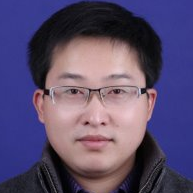Mathematical Modeling and Simulation of Oscillatory Phenomena
A special issue of Mathematics (ISSN 2227-7390). This special issue belongs to the section "Dynamical Systems".
Deadline for manuscript submissions: closed (30 November 2023) | Viewed by 18996
Special Issue Editors
Interests: qualitative theory; ordinary differential equations; functional differential equations; dynamical systems; mathematical modeling in physical/social/life sciences
Special Issues, Collections and Topics in MDPI journals
Interests: difference and differential equations; partial differential equations; dynamic equation; time scales; control theory; biology applications
Special Issues, Collections and Topics in MDPI journals
Interests: time scale calculus; delay differential equations; ecological modelling; stochastic control; difference equation
Interests: qualitative theory; ordinary differential equations; functional differential equations; dynamical systems; mathematical modeling in physical/social/life sciences
Special Issue Information
Dear Colleagues,
Oscillatory phenomena have been observed in many dynamical systems encountered in natural sciences and technology. Much of physiology operates in an oscillatory manner, including in the examples of hormone oscillations, oscillatory gene expressions, and oscillation in muscles; oscillation processes are also observed in ecosystem populations, biochemistry, mechanics, population dynamics and there are thermodynamic oscillations, oscillations in market economies, and so on. The application prospects facilitate rapid development of the corresponding theoretical framework, generally known as oscillation theory. The problem of studying the oscillatory properties of solutions and revealing their relationship with corresponding oscillatory processes in systems of a diversified physical nature is still a subject of intensive research.
This Special Issue focuses on the modeling and simulation of nonlinear dynamical systems of various nature that exhibit oscillation as their fundamental mode of behavior.
Papers are invited from those who work on oscillation theory or in any one of the areas in which existing tools and methods are applied to investigate the oscillatory phenomena of a given dynamical system modeling a real-world problem. Having in mind that the delay is one of the major causes of oscillations in dynamical systems, we are particularly interested in (but not exclusively) the oscillation theory of time-delay systems.
We look forward to receiving your submissions.
Dr. Irena Jadlovská
Prof. Dr. Tongxing Li
Prof. Dr. Syed Abbas
Prof. Dr. Said R Grace
Guest Editors
Manuscript Submission Information
Manuscripts should be submitted online at www.mdpi.com by registering and logging in to this website. Once you are registered, click here to go to the submission form. Manuscripts can be submitted until the deadline. All submissions that pass pre-check are peer-reviewed. Accepted papers will be published continuously in the journal (as soon as accepted) and will be listed together on the special issue website. Research articles, review articles as well as short communications are invited. For planned papers, a title and short abstract (about 100 words) can be sent to the Editorial Office for announcement on this website.
Submitted manuscripts should not have been published previously, nor be under consideration for publication elsewhere (except conference proceedings papers). All manuscripts are thoroughly refereed through a single-blind peer-review process. A guide for authors and other relevant information for submission of manuscripts is available on the Instructions for Authors page. Mathematics is an international peer-reviewed open access semimonthly journal published by MDPI.
Please visit the Instructions for Authors page before submitting a manuscript. The Article Processing Charge (APC) for publication in this open access journal is 2600 CHF (Swiss Francs). Submitted papers should be well formatted and use good English. Authors may use MDPI's English editing service prior to publication or during author revisions.
Keywords
- mathematical model
- oscillation
- dynamical system
- delay







